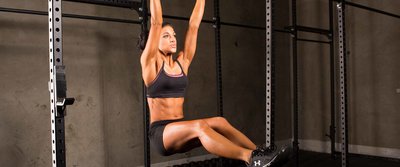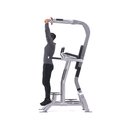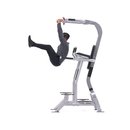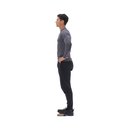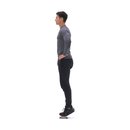Shoulders | Back | Arms | Chest | Legs | Abs & Calves | Final
Two of the most often neglected body parts in a woman's training program are the abs and calves. Both of these muscle groups have to be trained with a very high intensity because they are used so often and recover so quickly.
The Abdominals
The abdominals are a problem area for lots of women, or so they think. Women who carry too much fat on their abs can't see the development of the well known "six pack," but this doesn't mean the development isn't there. It just means that a layer of fat hides the muscles. Despite this, it's still important to have strong abs to provide core, functional strength in many everyday activities and almost all forms of exercise.
Strong abs also help maintain an erect posture. And even if you carry little to no fat on your abs, you still won't have a six pack if they aren't developed enough, just flat abs.
The abdominals are comprised of two major muscle groups—the rectus abdominus and the obliques. The rectus abdominus extends from just under the chest down to the pubic bone, and is divided into 2 columns and four rows. This muscle is used to flex the spine. The obliques (internal and external) are located just outside the rectus abdominus on the sides of the torso, and are used to both flex and rotate the spine.
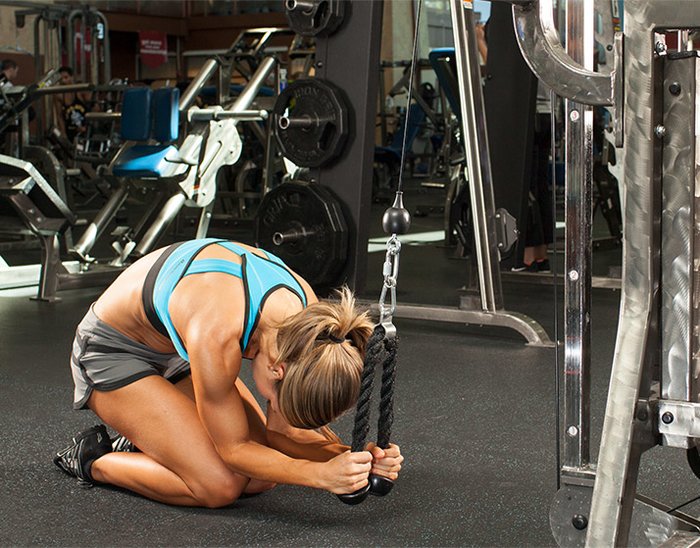
The Calves
The calf muscles are often neglected by women because they don't see this muscle group as a "problem area," so it is often forgotten. What you may not know is that a set of well-developed calves helps balance out the symmetry of the legs, making the upper leg appear smaller. Full, round calves also show the strength of a woman and are displayed by many elite female athletes.
There are two main muscles of the calves, the first of these being the gastrocnemius. It is comprised of a medial head (inside) and a lateral head (outside). This muscle is used to flex the ankle and knee joints. The smaller of the two muscles, the soleus, lies below the gastrocnemius and is used to flex the ankle joint.
Training Basics
When it comes to abs training, an important factor is to eliminate many of the exercises that largely involve the iliopsoas, or hip flexor muscles. This takes target away from the abs as a good bit of the resistance is placed on the hip flexor muscles.
In regards to calves training, standing exercises mostly target the gastrocnemius, while seated exercises focus more on the soleus.
Isolation Movements
Abs
- Hanging Leg Raise
- Hanging Bent-Knee Raise
- Hanging Side Raise (Obliques)
- Bent-Knee Crunch
- Alternating Crunch (Obliques)
- Reverse Crunch
- Straight Leg Crunch
- Rope Crunch
- Machine Crunch
- Decline Board Crunch
- Exercise Ball Crunch
- V-Ups
- Pike-Ups
- Plank Hold
Calves
- Standing Machine Calf Raise
- Donkey Calf Raise
- Seated Calf Raise
- Seated Calf Press
- Leg Press Machine Calf Raise
- One-Leg Standing Dumbbell Calf Raise
Synergistic Movements
The abs are used as stabilizer muscles in almost every resistance type exercise. To get additional stimulation of the abs, perform movements standing, seated without back support, or on an exercise ball. This recruits the abs and the lower back as core stabilizers.
Power building exercises recruit the abs for strength and size gains better than any regular compound or isolation movement. The top three—squats, deadlifts, and bench press—when performed with enough intensity, tax the abs as stabilizers better than almost any other exercise. Calves are also recruited in deadlifts and squats.
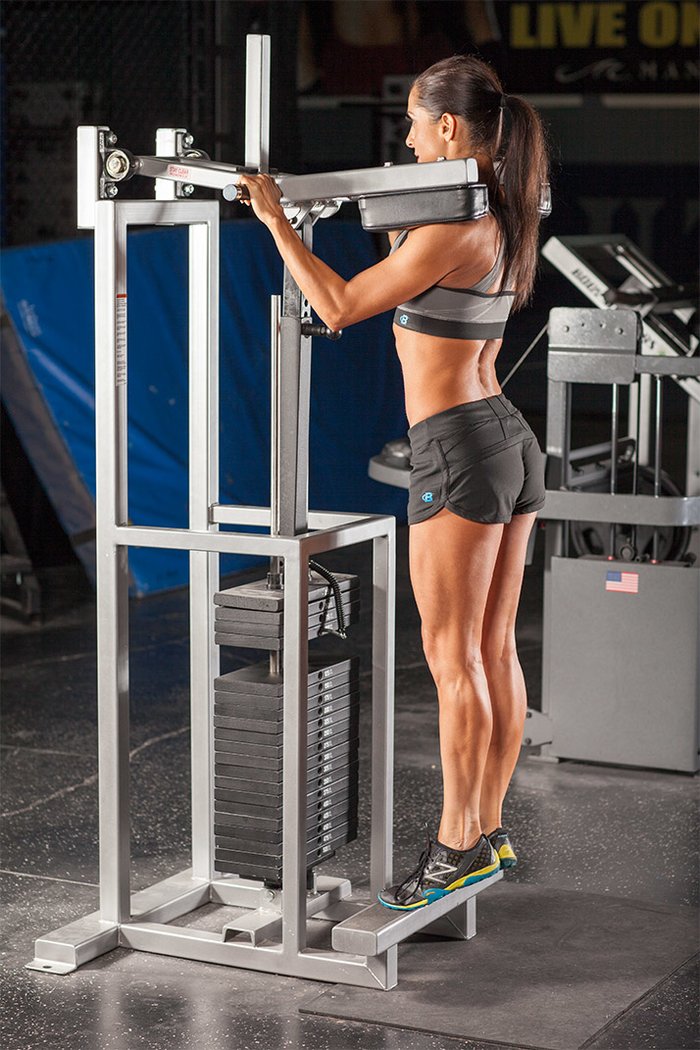
Developing Your Training Program
In regards to abs training programs, I believe the best route is to go for high intensity via a higher rep range, very short rest periods, and a variety of angles and exercises. I prefer supersets and giant sets, similar to circuit-style training, for the abdominals and obliques. Choose 3-5 exercises and pair at least two of them together back-to-back, for best results.
Calves should be trained slightly differently—with extremely heavy weight to tax them for growth. Choose at least 1-2 standing movements and at least one seated movement to target all the muscles of the calf.
Sets & Repetitions
For abdominals, perform 3-4 working sets and take every set to failure. This will put you in a rep range that is individual to you. Usually this range is anywhere from 15-30 reps, depending on your muscular endurance. Rest only about one minute between sets.
For calves, perform 4-6 working sets as you would a larger body part. Pyramid up in weight and down in reps, or choose a consistent heavy weight, but aim to go up in reps on every set. I prefer to mix both styles of training into my calf workout for ultimate variety and stimulation. Rest only about a minute between sets on calves as well.
Additional Muscles Often Trained With Abs and Calves
The abs and calves are usually "afterthought" muscle groups, so a trainee usually doesn't consider which muscles to train with them, but rather which muscles to train them with. In my experience, when I pair either abs or calves with another muscle group in my regular training split, I often neglect them and don't train them long and intensely enough.
To counteract this, I train abs and calves together on their own day (an off day from my regular three day split), either Tuesday or Thursday.
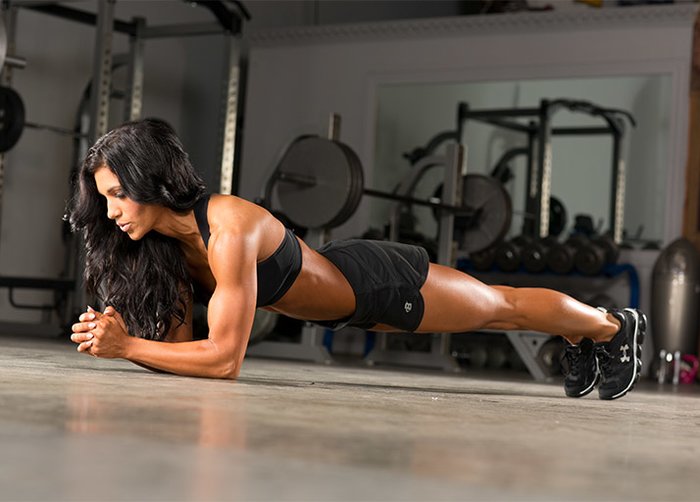
Frequency, Duration & Intensity
There is much controversy surrounding frequency of training in regards to abs and calves. While it's true that they recover quickly, I believe that they need rest as well. With that being said, my recommendations are to train abs and calves each two to three times weekly, with at least one rest day in between each training day.
Most people throw in a few exercises for these body parts at the end of their regularly scheduled workouts. This is okay if you've already reached your desired development for those body parts and are simply trying to maintain, but if you wish to place extra focus on developing either abs or calves, you need to prioritize them more in your training split.
If this is the case, spending an average of 30 minutes training each body part during each training session should be accurate, assuming you're training with enough intensity and a challenging weight.
The abs and calves are difficult to respond to even high intensities of training. To counteract this, you have to train with 100% intensity every time, especially if these are lagging body parts for you. You have to push past that burn and challenge yourself with new exercises and heavier weights each time you train.
Targeting Specific Goals
Adding Mass Safely
Adding mass to either abs or calves involves increasing poundage. Like I mentioned above, I rarely recommend weighted abs exercises. If you really feel you need to add mass to your abs, then I suggest adding some weighted movements to your program, such as weighted rope crunches or weighted machine crunches.
The calves need to be hammered with VERY heavy weight to see gains. They need to be trained with as much attention as you would give any major body part that you are wishing to improve upon. Again, choose 3-4 exercises performed at ultimate intensity. Aim for a weight that is 3-4 times your bodyweight. The regular standing calf raise should be the staple of your calf-training program if you wish to gain mass.
You can go the heaviest on this exercise, and it effectively targets all the muscles in a great range of motion to stimulate the most growth and strength gains.

Training At Home
The abs and calves are two of the easiest body parts to train at home. They require little to no equipment and therefore, can be done almost anywhere, anytime.
Many abs exercises are done lying on the floor or on an exercise ball. In addition, if you have a pull-up bar, you can do hanging abs exercises on that. For calves, use heavy dumbbells and do standing calf raises on the stairs (one legged if you need more balance), and do seated movements on a bench or chair with the weight (dumbbells or weight plate) resting on the tops of your thighs.
Exercise Variety
Keep your exercises for abs and calves varied as much as possible. Because these muscle groups are so challenging to develop, it is essential that you change the order and type of exercises as much as possible. This will challenge the muscles from all angles and will place different amounts of stress on different parts of the muscle.
Symmetry
Abdominal development is important to a physique competitor. Nicely cut, flat abs look great on a woman whether she competes or not. They truly display a woman's commitment to the health and fitness lifestyle, especially her diet! Your abs should be developed in size and strength equally in all three regions (upper, middle, lower) as well as the obliques.
If your aim is to add size, which I only recommend if you have no visible abs even at extremely low body fat, choose weighted exercises to really make your abs pop. The muscular thickness will make them visible with even a bit more fat over them than if the muscles are thin. One thing to consider with weighted abs exercises is that they can thicken the waist, which is why I don't recommend them for most women.
Symmetry of the calves is very important as it greatly effects one's overall leg development. Both heads of the gastrocnemius should be equally developed, tapering down into the soleus and in at the ankle. Size-wise, the calves should be as large as the arms. To focus your training on the gastrocnemius, opt for standing calf exercises at extremely heavy weights. To bring up your soleus, choose several seated movements in addition to the standing movements you already perform.
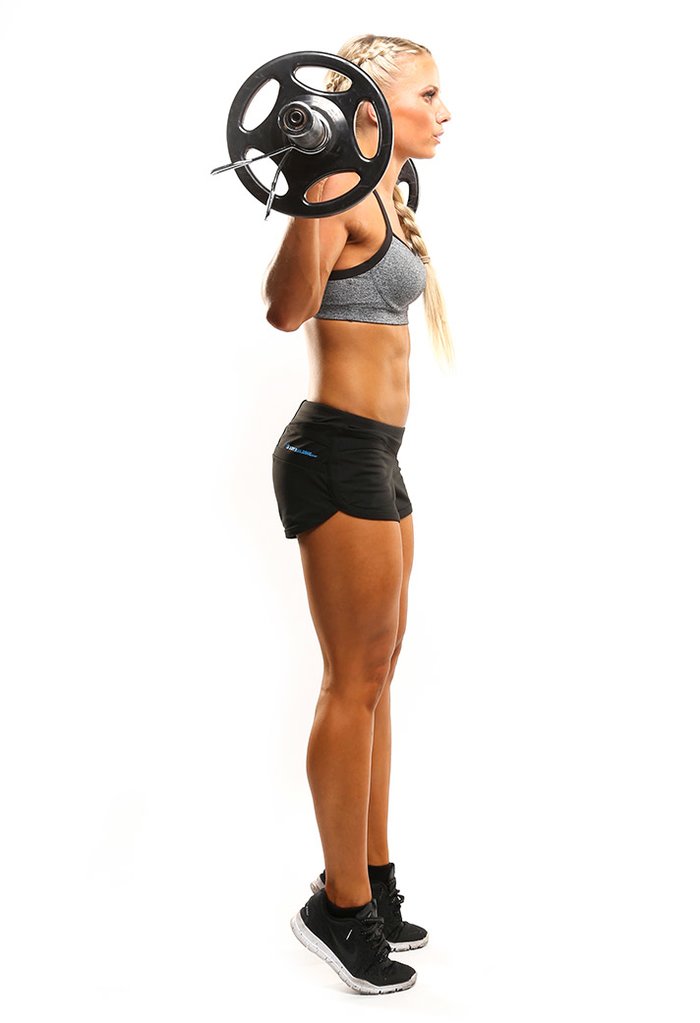
Isolation
Isolating the abdominals is not difficult if you know how to do it. During all your abs exercises you must focus on flexing the spine only, while keeping the hips and knees in a fixed, slightly bent position. The best way to do this is to curl your hips up and under (towards your belly button) when performing abs exercises. Keeping your hips stationary puts the joint movement in the hips rather than the spine, and targets the hip flexors instead of the abs.
To better isolate the calf muscles during your training sessions, ensure you are getting a full range of motion - dropping your heels as far down as you can on the descent, and raising up on your toes as high as you can at peak contraction. Keep your knees in a fixed, slightly bent position, to take the focus off the legs and place it solely on the calf muscles.
Prioritization
If you wish to prioritize the abs or the calves, I suggest dedicating an entire training session to that body part alone. Perform a full-length workout on that body part for 30-45 minutes, and train it 2-3 times per week with at least one day of rest in between workouts.
In addition, choose exercises in your other workouts that synergistically work the desired muscle group. For instance, if you want to hit your abs more, choose free weight movements and standing over seated to recruit your abs as stabilizers. To hit the calves more, add power-building movements like push presses, clean and presses, dead lifts, and squats.
Go Heavy, Go Hard...
Going heavy and hard on your abs workouts is not necessary, but calves are a different story. Think about this: your calves are easily accustomed to lifting your bodyweight independently every day, so twice your bodyweight is not much resistance. They are used to walking, jogging, and jumping around in every day movements, so they get worked at multiple angles as well.
Training your calves heavily involves using a poundage that's three to four times your bodyweight for your heaviest sets. This is hard to build up to, but will give you a concrete number to aim for and to assess your difficulty level by.

Sample Training Programs
The following workouts are designed to be completed on their own day, or they can be paired together. Another option is to train one or both body parts prior to a cardio session.

BodyFit
$6.99/month- 2,500+ expert-created single workouts
- 3,500+ how-to exercise videos
- Detailed workout instruction
- Step-by-step workout tips
- Training at gym or at home
- Access to Workout Plans
- Access to Bodyfit App
- Store Discounts
Already have a Bodybuilding.com account with BodyFit? Sign In

What comes with BodyFit?

- Instructional Videos
Don't risk doing a workout improperly! Avoid injury and keep your form in check with in-depth instructional videos.

- How-to Images
View our enormous library of workout photos and see exactly how each exercise should be done before you give it a shot.

- Step-by-Step Instructions
Quickly read through our step-by-step directions to ensure you're doing each workout correctly the first time, every time.

BodyFit
$6.99/month- 2,500+ expert-created single workouts
- 3,500+ how-to exercise videos
- Detailed workout instruction
- Step-by-step workout tips
- Training at gym or at home
- Access to Workout Plans
- Access to Bodyfit App
- Store Discounts
Already have a Bodybuilding.com account with BodyFit? Sign In

What comes with BodyFit?

- Instructional Videos
Don't risk doing a workout improperly! Avoid injury and keep your form in check with in-depth instructional videos.

- How-to Images
View our enormous library of workout photos and see exactly how each exercise should be done before you give it a shot.

- Step-by-Step Instructions
Quickly read through our step-by-step directions to ensure you're doing each workout correctly the first time, every time.


